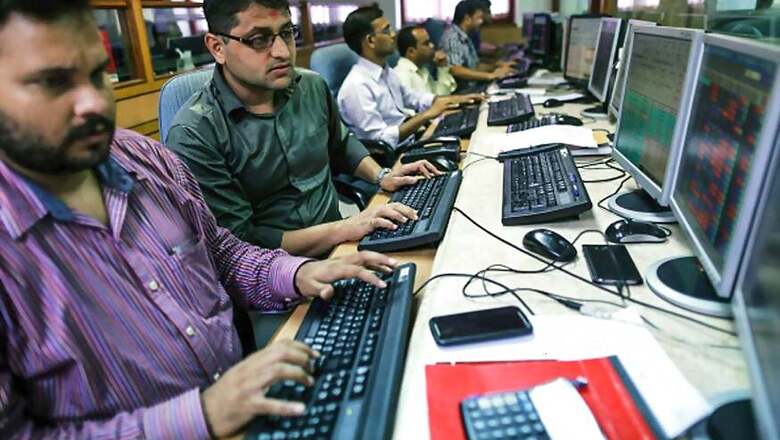
views
New Delhi: The proposal to tax long-term capital gains (LTCG) – money you and me make from holding shares for a long period – may have spooked the stock markets briefly this morning but it is a welcome move nevertheless.
One, it corrects, somewhat, the prevailing imbalance on market investments because though investment instruments are taxed gains from holding shares for long are not. Even short-term capital gains – money made by selling shares after holding for less than a year – are taxed at 15%. Two, investors who park wealth in the stock markets would be encourage to deploy the capital in ways that are more economically productive, say, in manufacturing activities. Three, it makes the government seem a little less pro-rich, little more benevolent towards the no-so-rich as much of the capital gains are collected by corporates, not individuals.
As of now, any redemption from mutual funds or sell-off from the stock market in less than 12 months attracts 15% tax. Fixed deposits, salaries and most other income and savings are taxed up to 30%, based on the earnings bracket. But any income from holding shares beyond one year has remained untaxed. This is what the government is after.
Such wealth, above Rs 1 lakh, will now be taxed at 10%. Remember, this is still lower than the short-term capital gains tax and a third of what you would pay if your earnings are in the highest tax bracket from any or all other sources. Also, with the “grandfathering” that the government has allowed, the new levy should hurt less than previously thought. Put simply, this means there is no retrospective taxation.
The 10% levy on long-term capital gains is in addition to the Securities Transaction Tax (STT) applicable to any share sale whether in the market or through mutual funds.
Productive Investment
“With the reforms introduced by the government and incentives given so far, the equity market has become buoyant. The total amount of exempted capital gains from listed shares and units is around Rs 3,67,000 crore as per returns filed for assessment year 2017-18. Major part of this gain has accrued to corporates and LLPs (limited liability partnerships). This has also created a bias against manufacturing, leading to more business surpluses being invested in financial assets. The return on investment in equity is already quite attractive even without tax exemption. There is therefore a strong case for bringing long term capital gains from listed equities in the tax net.”
So from next fiscal year onwards, a LTCG tax at 10% will be levied on gains exceeding Rs 1 lakh, “without allowing the benefit of any indexation”. However, all gains up to 31st January, 2018 will be grandfathered.
For example, if an equity share is purchased six months before January 31, 2018 at Rs 100 and the highest price quoted on January 31, 2018 for this share is Rs 120, there will be no tax on the gain of Rs 20 if this share is sold after one year from the date of purchase. However, any gain in excess of Rs 20 earned after 31st January, 2018 will be taxed at 10% if this share is sold after 31st July, 2018.”
The FM has also proposed a tax on distributed income by equity oriented mutual fund at the rate of 10%. This will provide a level playing field across growth oriented funds and dividend distributing funds.
What the government earns through the new taxation regime is not much: Just about Rs 20,000 crore in the first year. But look at it this way: the markets have galloped to all-time highs, with increased liquidity and corporate earnings growing in double digits. Against this backdrop, there was perhaps no better time than niw for the FM to reintroduce such a tax. Long-term capital gains tax was last levied in 2004.
Also, note that this will most likely be the last Budget that the Modi government will present and it had to be, per force, pro-poor or at least seen to be so. With a much-dreaded tax on capital gains and also some other measures like not allowing large corporate to benefit from a lower corporation tax (the levy has been lowered only for companies with a turnover of Rs 250 crore), the government is trying to burnish its credentials with the aam aadmi in an election year.
Remember, as per this Oxfam report, 73% or three-fourths of the wealth generated last year went to the richest 1% of Indians. At the same time, 67 crore Indians who comprise the poorest half of the population, saw onlyt a 1% increase in their wealth. These alarming statistics may have played on the FM’s mind when he penciled in the long-term capital gains tax.
(The author is senior journalist)














Comments
0 comment